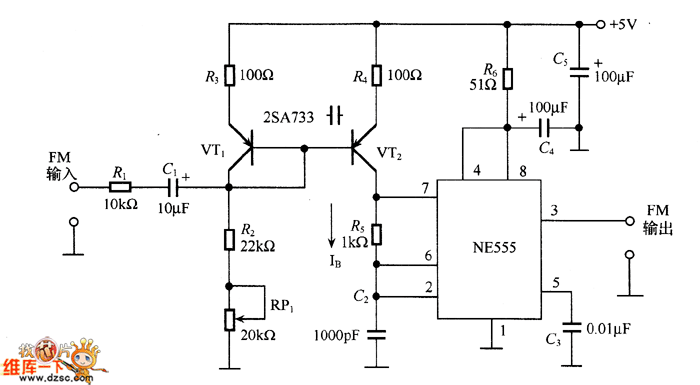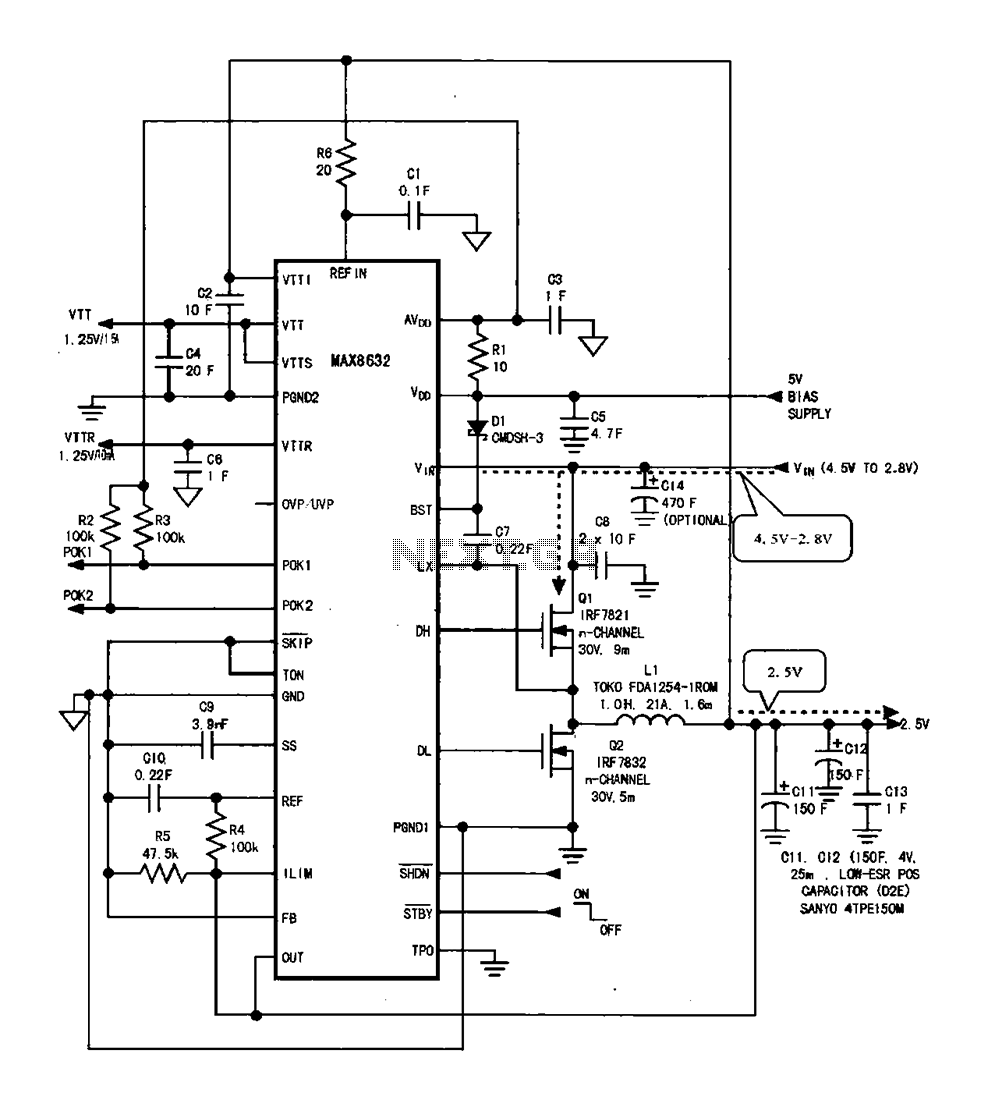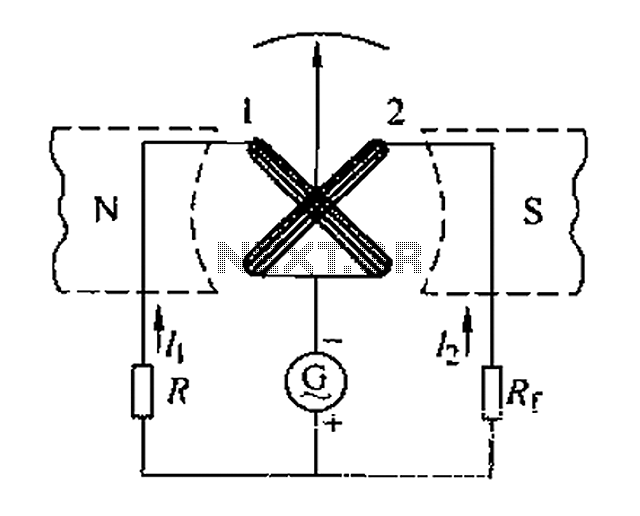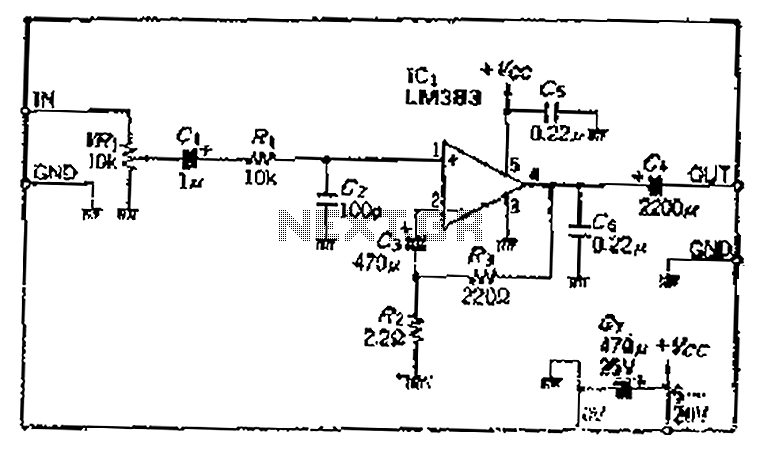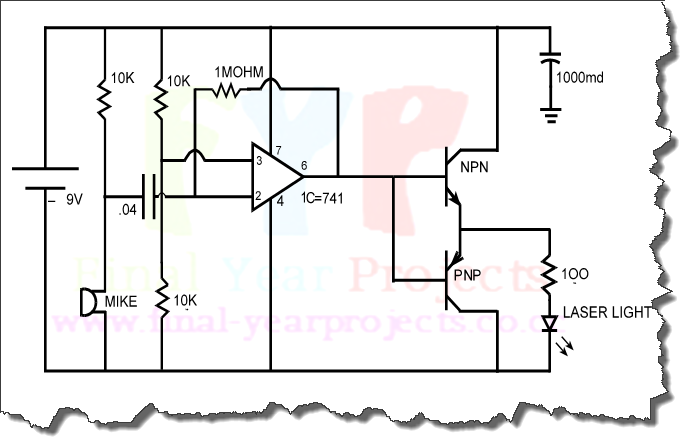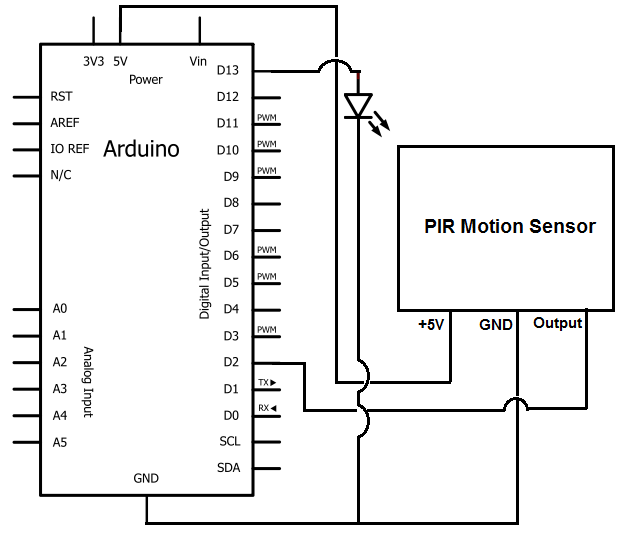
Complete Ar/Kr Ion Laser Power Supply Schematics
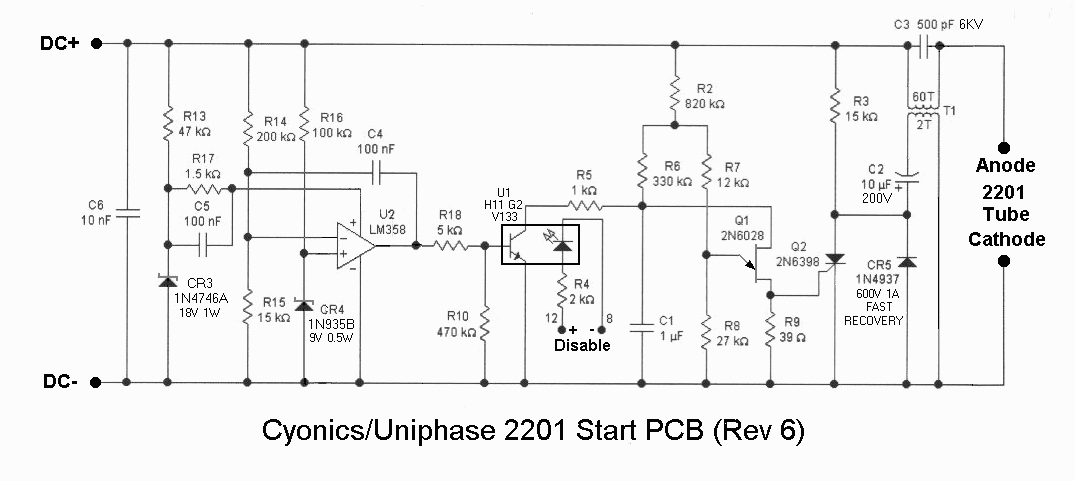
This chapter provides detailed schematics of various power supplies suitable for use with common Ar/Kr ion tubes available to hobbyists in the surplus market. Included are examples of commercial designs (Omnichrome 150R and 532 head, Lexel 88 and head) as well as a simpler but fully capable system for small air-cooled ion tubes (SG-IL1) that can be constructed from readily available parts. This system is satisfactory for typical experimental and light show applications and can be easily modified to accommodate larger ion tubes or provide additional features. There are also a couple of basic designs (SG-IT1 and SG-IX1/SG-IY1) that can be assembled quickly and inexpensively, useful for basic testing of Ar/Kr ion laser tubes. These can later be converted into full-featured units. Additionally, schematics for several other ion laser heads, including those from NEC and Cyonics/Uniphase, are provided, along with interconnect wiring for some common systems. In conjunction with other chapters on Ar/Kr ion lasers, these schematics can be useful for understanding the principles of operation of ion laser power supplies or for repairing a broken unit. While the presented information does not constitute complete plans, they can be adapted to various ion laser tubes to achieve desired performance and sophistication, ranging from basic to fully featured with numerous enhancements. Brief descriptions of the Lexel-95 PSU, Spectra-Physics 265 exciter with a 165-3 argon head, and a few other systems are also included, with potential for future schematic additions. A chart lists each power supply described, most with schematics, and the approximate range of ion tube voltages that can be handled by each design without modification. In most cases, minor changes to the circuit can accommodate slightly higher or lower voltage tubes. This chart serves as a guide; it is essential to check the specifications of the tube(s) before purchasing or building any equipment.
Power Input: The nominal input voltage for all designs is line connected (non-isolated), except for FS-IT1. The Omni-150 can be converted to 230 VAC operation through component replacement and rewiring. The Lexel-88 features a buck-boost transformer and various strapping options to support multiple input voltages.
Regulation Type: The designs utilize different regulation types: N (None), L (Linear), S (Switchmode, PWM).
Regulation Mode: The regulation modes include C (Current feedback) and L (Light feedback). For power supplies without regulation, current control is achieved using a tapped or adjustable ballast resistor (heating element) and/or by controlling the input voltage with a Variac.
Tube Voltage: The approximate range of tube voltages supported by each power supply is provided. In some cases, an extended range may be achievable with adjustments or modifications, particularly for switchmode and linear regulators. It should be noted that the entries for commercial power supplies are estimates, and concrete data is welcomed.
The designs of the home-built ion laser power supplies can be easily adapted to almost any small (air-cooled) laser head. Models known to work or expected to function without difficulty include the ALC-60X, NEC GLG3030, SP-162A/B/C, and Cyonics/Uniphase 22XX.This chapter provides detailed schematics of a variety of power supplies suitable for use with the common Ar/Kr ion tubes available to the hobbyist on the surplus market. Included are examples of commercial designs (Omnichrome 150R and 532 head, Lexel 88 and head) as well a somewhat simpler but fully capable system for small air-cooled ion tubes (
SG-IL1) that may be constructed from readily available parts and will be satisfactory for typical experimental and light show applications, and may be easily modified to handle larger ion tubes or provide additional features. There are also a couple of `bare bones` designs (SG-IT1 and SG-IX1/SG-IY1) that can be `thrown together` relatively quickly and inexpensively and are useful for basic testing of Ar/Kr ion laser tubes.
Either of these can be converted into a full featured unit at a later time. There are also schematics of several other ion laser heads including those from NEC and Cyonics/Uniphase, as well as interconnect wiring for some common systems. In conjunction with the other chapters on Ar/Kr ion lasers, these sets of schematics can be useful for understanding the principles of operation of ion laser power supplies or for repair of a broken unit.
While what are presented here aren`t really complete plans, with a bit of effort, they can be adapted to a variety of ion laser tubes to provide any degree of performance and sophistication desired - from basic and simple to full featured with all sorts of bells and whistles. Brief descriptions are also provided of the Lexel-95 PSU, Spectra-Physics 265 exciter with a 165-3 argon head, and a few other systems.
Schematics for these may be added in the future. The chart below lists each of the power supplies described in this chapter (most with schematics) and the approximate range of ion tube voltages that can be handled by that design without modification. In most cases, slightly higher or lower voltage tubes can be accommodated with minor changes to the circuit.
Use this chart only as a guide - check the specifications of your tube(s) before buying or building anything! (Note 1) (Note 2) (Note 3) (Note 4) Desig- Power Regulation <- Tube Voltage -> nation Input Type Mode 80 90 100 110 | 180 220 Typical Heads - Omni-150 115 VAC S C/L * ALC-60X/Omni-532 NEC PSU 115 VAC S C/L * NEC GLG3030 SP-261 115 VAC S C/L * SP-162 Lexel-88 230 VAC L C/L * Lexel-88 SG-IT1 115 VAC N NA * (Note 5) SG-IX1 115 VAC N NA * " SG-IY1 115 VAC L C * " SG-IL1 115 VAC L C/L * " FS-IT1 230 VAC N NA * " Power Input: The nominal input voltage.
All are line connected (non-isolated) except for FS-IT1. The Omni-150 can be converted to 230 VAC operation by component replacement and some rewiring. The Lexel-88 includes a buck-boost transformer and a variety of strapping options to support a variety of other input voltages. Regulation Type: N = None, L = Linear, S = Switchmode (PWM). Regulation Mode: C = Current feedback and L = Light feedback. For power supplies without regulation, current control is achieved via the use of a tapped or adjustable ballast resistor (heating element!) and/or via control of input voltage via a Variac.
Tube Voltage: Approximate range of tube voltages supported by the power supply. In some cases, an extended range (probably on the low side for switchmode regulators and the high side for linear regulators) may be possible with adjustments and/or modifications to permit a given power supply to support other tubes without blowing up. Note that the entries for the commercial power supplies, above (first grouping), are just wild guesses - I would welcome some hard facts if anyone actually has some!
:) The designs of the home-built ion laser power supplies can be easily adapted to almost any small (air-cooled) laser head. A few of the models that are either known to work or expected to work without difficulty include the ALC-60X, NEC GLG3030, SP-162A/B/C, and Cyonics/Uniphase 22XX.
🔗 External reference
Power Input: The nominal input voltage for all designs is line connected (non-isolated), except for FS-IT1. The Omni-150 can be converted to 230 VAC operation through component replacement and rewiring. The Lexel-88 features a buck-boost transformer and various strapping options to support multiple input voltages.
Regulation Type: The designs utilize different regulation types: N (None), L (Linear), S (Switchmode, PWM).
Regulation Mode: The regulation modes include C (Current feedback) and L (Light feedback). For power supplies without regulation, current control is achieved using a tapped or adjustable ballast resistor (heating element) and/or by controlling the input voltage with a Variac.
Tube Voltage: The approximate range of tube voltages supported by each power supply is provided. In some cases, an extended range may be achievable with adjustments or modifications, particularly for switchmode and linear regulators. It should be noted that the entries for commercial power supplies are estimates, and concrete data is welcomed.
The designs of the home-built ion laser power supplies can be easily adapted to almost any small (air-cooled) laser head. Models known to work or expected to function without difficulty include the ALC-60X, NEC GLG3030, SP-162A/B/C, and Cyonics/Uniphase 22XX.This chapter provides detailed schematics of a variety of power supplies suitable for use with the common Ar/Kr ion tubes available to the hobbyist on the surplus market. Included are examples of commercial designs (Omnichrome 150R and 532 head, Lexel 88 and head) as well a somewhat simpler but fully capable system for small air-cooled ion tubes (
SG-IL1) that may be constructed from readily available parts and will be satisfactory for typical experimental and light show applications, and may be easily modified to handle larger ion tubes or provide additional features. There are also a couple of `bare bones` designs (SG-IT1 and SG-IX1/SG-IY1) that can be `thrown together` relatively quickly and inexpensively and are useful for basic testing of Ar/Kr ion laser tubes.
Either of these can be converted into a full featured unit at a later time. There are also schematics of several other ion laser heads including those from NEC and Cyonics/Uniphase, as well as interconnect wiring for some common systems. In conjunction with the other chapters on Ar/Kr ion lasers, these sets of schematics can be useful for understanding the principles of operation of ion laser power supplies or for repair of a broken unit.
While what are presented here aren`t really complete plans, with a bit of effort, they can be adapted to a variety of ion laser tubes to provide any degree of performance and sophistication desired - from basic and simple to full featured with all sorts of bells and whistles. Brief descriptions are also provided of the Lexel-95 PSU, Spectra-Physics 265 exciter with a 165-3 argon head, and a few other systems.
Schematics for these may be added in the future. The chart below lists each of the power supplies described in this chapter (most with schematics) and the approximate range of ion tube voltages that can be handled by that design without modification. In most cases, slightly higher or lower voltage tubes can be accommodated with minor changes to the circuit.
Use this chart only as a guide - check the specifications of your tube(s) before buying or building anything! (Note 1) (Note 2) (Note 3) (Note 4) Desig- Power Regulation <- Tube Voltage -> nation Input Type Mode 80 90 100 110 | 180 220 Typical Heads - Omni-150 115 VAC S C/L * ALC-60X/Omni-532 NEC PSU 115 VAC S C/L * NEC GLG3030 SP-261 115 VAC S C/L * SP-162 Lexel-88 230 VAC L C/L * Lexel-88 SG-IT1 115 VAC N NA * (Note 5) SG-IX1 115 VAC N NA * " SG-IY1 115 VAC L C * " SG-IL1 115 VAC L C/L * " FS-IT1 230 VAC N NA * " Power Input: The nominal input voltage.
All are line connected (non-isolated) except for FS-IT1. The Omni-150 can be converted to 230 VAC operation by component replacement and some rewiring. The Lexel-88 includes a buck-boost transformer and a variety of strapping options to support a variety of other input voltages. Regulation Type: N = None, L = Linear, S = Switchmode (PWM). Regulation Mode: C = Current feedback and L = Light feedback. For power supplies without regulation, current control is achieved via the use of a tapped or adjustable ballast resistor (heating element!) and/or via control of input voltage via a Variac.
Tube Voltage: Approximate range of tube voltages supported by the power supply. In some cases, an extended range (probably on the low side for switchmode regulators and the high side for linear regulators) may be possible with adjustments and/or modifications to permit a given power supply to support other tubes without blowing up. Note that the entries for the commercial power supplies, above (first grouping), are just wild guesses - I would welcome some hard facts if anyone actually has some!
:) The designs of the home-built ion laser power supplies can be easily adapted to almost any small (air-cooled) laser head. A few of the models that are either known to work or expected to work without difficulty include the ALC-60X, NEC GLG3030, SP-162A/B/C, and Cyonics/Uniphase 22XX.
🔗 External reference
